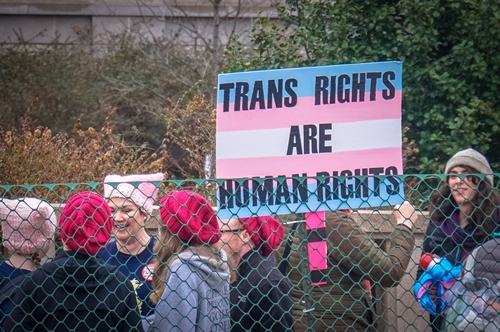Transfeminism shares the unifying principle with other feminisms that gender is a patriarchal social construct used to oppress women.
Dr Susheela B
Emi Koyama’s Transfeminist Manifesto was published in2001 and did much to popularize the term transfeminism. It was probably her colleague Diana Courvant who coined the term ‘transfeminism’ in the early 90’s. Both women were trans survivors. Transfeminism’s primary principle is bodily autonomy, the idea that each of us has the right to make decisions regarding our own bodies, identities and expressions. Transfeminism advocates that people should not only be allowed to live their own lives in whichever way they choose and define themselves; and should also be respected by the society for their individuality and uniqueness. The 90’s were a fiery time for Anglophone trans politics. Patrick Califia’s Sex Changes, which documents the period and his own struggles to participate in feminism, has the first usage of the word ‘transfeminism’ in a book. The term transfeminism has been defined by Emi Koyama as a ‘movement by and for trans women who view their liberation to be intrinsically linked to the liberation of all women and beyond.’ Koyama notes that ‘it is also open to other queers, intersex people, trans men, non-trans women, and others who are sympathetic towards the needs of trans women and consider their alliance with trans women to be essential for their liberation.’ Another principle of transfeminsim states that each individual has every right, and is the only one to have the right, to possess complete control over their bodies. There shall be no form of authority-political, medical, religious or otherwise –that can override a person’s decisions regarding their bodies and their wellbeing and their autonomy is fully in the hands of that sole individual. Early voices in the movement include Kate Bornstein, author of 1994 Gender Outlaw: On Men, Women, and the Rest of Us, and Sandy Stone, author of the essay ‘The Empire strikes Back: A Posttranssexual Manifesto.’ Transfeminism.org was created in 2000 to promote the Transfeminism Anthology Project by Diana Courvant and Emi Koyama. The site primarily devoted itself, however, to introducing the concept of transfeminism to academia and to finding and connecting people working on transfeminism projects and themes through an anothology of the same name. In the past few decades, the idea that all women share a common experience has come under scrutiny by women of colour, lesbians and working-class women among others. Many transgenders are also questioning what gender means and are challenging gender as biological fact. Transfeminists insists that their unique experiences can be recognized as part of the feminist sphere. Transfeminism incorporates all major themes of third wave feminism, including diversity, body image, self-definition and women’s agency. Tranfeminism is not merely about merging trans concerns with feminism. It also includes critical analysis of second wave feminism from the perspective of the third wave. Like all feminisms, transfeminism critiques mainstream notions of masculinity and argues that women deserve equal rights. Lastly;transfeminism shares the unifying principle with other feminisms that gender is a patriarchal social construct used to oppress women. Therefore, by many, the ‘trans’ in transgender has been used to imply transgressiveness. The road to legitimacy for transfeminism as a concept has been different and more vexed than for other feminisms. Marginalized women of trans background and affect have had to prove that their needs are different and that mainstream feminism does not necessarily speak for them. Contrarily, trans women must show their womanhood is equally valid as that of other women, and that feminism can speak for them without ceasing to be feminism. Radical feminist Janice Raymond’s resistance to considering trans women as women and as participants in feminism is representative of this obstacle. J.K Rowling’s 2005 novel The Silkworm has been criticized as a vicious attack on trans people. One of the characters is a young transwoman named Pippa. The way Rowling chose to describe and emphasize Pippa’s character is awfully similar to the points usually made by transphobes to invalidate trans men and women’s identities. ∎